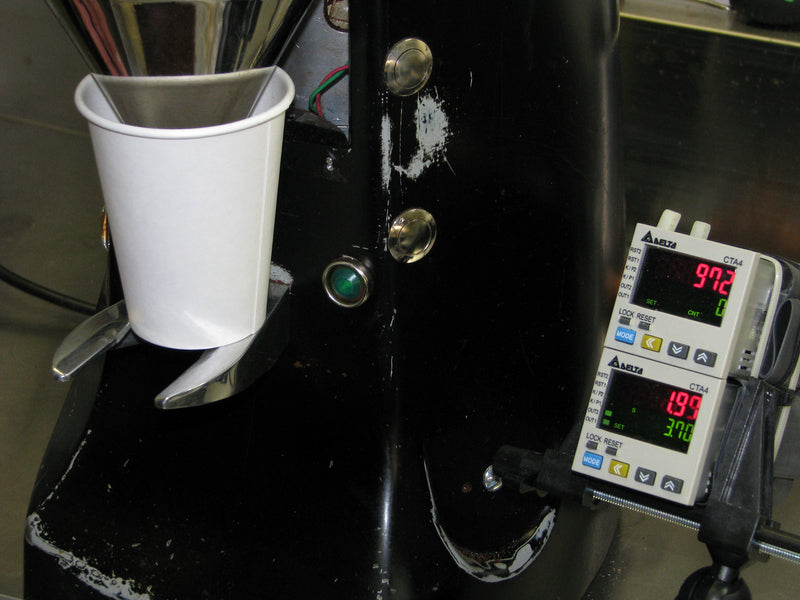One of the main purposes of the R&D lab at Five Senses is to develop and perfect coffee-making equipment and our coffee-making methods using a scientific approach.
It could be argued that significant coffee grinding or extraction developments are not really possible without first being able to quantify the test results of modifications or new gadgets. Once our data is correlated with expert sensory evaluation, we have everything we need to allow us to make some real improvements in the cup and in the cafe.
One excellent and relatively new product that has made in-house measurement of coffee extraction yield very achievable is the VST Digital Refractometer. The following is Part 1 of my short, guided tour of the Five Senses’ test lab setup for grinding measured amounts of coffee, making and espresso shot and using the VST Digital Refractometer to determining the extraction yield.
Preparing a test basket of coffee?
The Equipment: A Mazzer Robur with an on-demand doser, controlled by an external timer to allow fast changes in grinding time, down to 1/100th of a second. A shot counter is fitted to keep track of the amount of coffee that has been through the grinding burrs and also provides a reference number to allocate to each test shot. A laboratory grade 200gm scale measures the exact weight of each dose +/- 0.02gm, information that is vital to the calculation for extraction yield. A spring-loaded tamper is used in place of hand tamping to remove the inherent uncertainties caused by individual barista techniques.
The Procedure: Before any testing samples are made, the grind setting on the Robur is adjusted to produce the required test weight at the standard recipe of 60ml in 30seconds. If the grinder has been left standing, it is purged with 60gm of coffee prior to taking a test sample. The sample is collected by a paper cup that has been used, set to zero on the scales. The weight of the sample is recorded in a spreadsheet before being carefully transferred to a warm portafilter. The sample is then tamped using a mechanical tamper. As previously mentioned, this reduces the possibility of introducing uncertainties due to varying pressure and alignment which is not uncommon with hand tamping, especially mine.
In Part 2, we will make our test espresso extraction and analyse the results.






